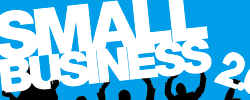
Popular Reading

How To Read A Company Balance Sheet
From the simple accounts of a small trader to the published accounts of public limited companies is quite a small step. The principles concerned are exactly the same, but what we have come to know as the income and expenditure account now takes the form of a profit and loss account. Moreover, this profit and loss account is usually divided into two parts - the first part, accommodating the proceeds of sales and the direct costs of producing the output, is called the trading account, the balancing item on which will be the gross profit; the second part, the profit and loss account proper, takes the gross profit from the trading account as the starting-off point, adding to that the receipts of income other than from sales (such as from investments) and accommodates all the indirect or overhead costs.
Single column final accounts
As for actual layout on the published page the final accounts of companies often take exactly the same form as was described in Chapter 13. But public companies are increasingly publishing their accounts in single column form, deducting the costs from profits, and deducting liabilities from assets. It is claimed that these are more readily understood by the layman, but presentation does not affect the figures in any way. To give the reader experience in recognising the alternative presentation the following example of a summarised and simplified balance sheet and profit and loss statement of a public company is provided in columnar form overleaf.
Having studied Chapter 6, most readers will have no difficulty in understanding the significance of most of the figures given. The only entries in this example that may not be readily comprehended are contained in the profit allocation at the end of the profit and loss statement.

Financial Statements Exercises
A The cash and bank account of A. White, an ironmonger, show the following total entries during the year to 31 December 2000.
Repairs to premises 1,500
Repairs to plant and machinery 2,500
Rates 2,900
Purchases 143,500
Sales 175,261
Sundry expenses 3,525
Wages 27,500
Salaries 7,250
The balance of cash in the bank is £8,725, and cash in the office till is £466. Stock is held valued at cost at £84,400. A total of £27,255 is owed to the business by debtors, and the business owes... see: Financial Statements Exercises